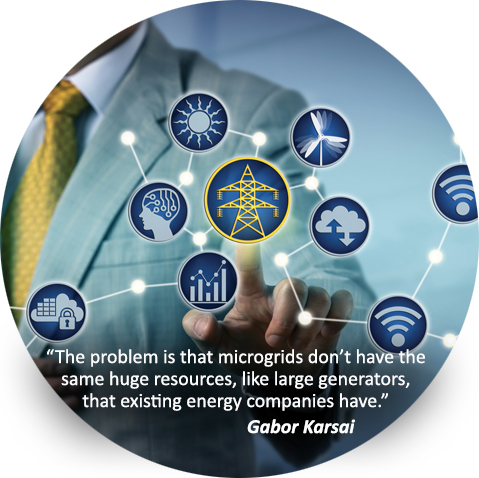 Microgrids can be major sources of renewable energy—if they are managed properly. Solving energy management is more than flipping a switch or connecting and disconnecting to the main grid when necessary. Such actions require a high degree of precision, involving complex computer controls and logic.
Microgrids can be major sources of renewable energy—if they are managed properly. Solving energy management is more than flipping a switch or connecting and disconnecting to the main grid when necessary. Such actions require a high degree of precision, involving complex computer controls and logic.
Gabor Karsai, professor of electrical engineering, computer science and computer engineering, and his team are building software that customizes solutions for effective energy management across microgrids in a variety of environments. He is leading a $2.5 million DARPA-funded project that extends an earlier project on managing microgrids, the relatively small energy systems that rely on local energy generation and storage.
“Microgrids often are very green sources of energy, and of interest to organizations looking to enhance their sustainability initiatives or decrease their reliance on the main power grid,” said Karsai, also associate director of the Vanderbilt Institute for Software Integrated Systems. “The problem is that microgrids don’t have the same huge resources, like large generators, that existing energy companies have. There needs to be a better way to manage the energy that is captured by microgrids in order to maximize its potential.”
The advanced software is intended to address control and energy management functions ranging from alternating current power control mechanisms to management of inbound energy generated from photovoltaics and energy stored in batteries. The research prototype, like its predecessor, will be free and open-source.
“We’d like anyone to use the software that we develop,” Karsai said. “This is a research prototype, not commercial, but we hope that it becomes good enough that other people can build on it and develop it further.”